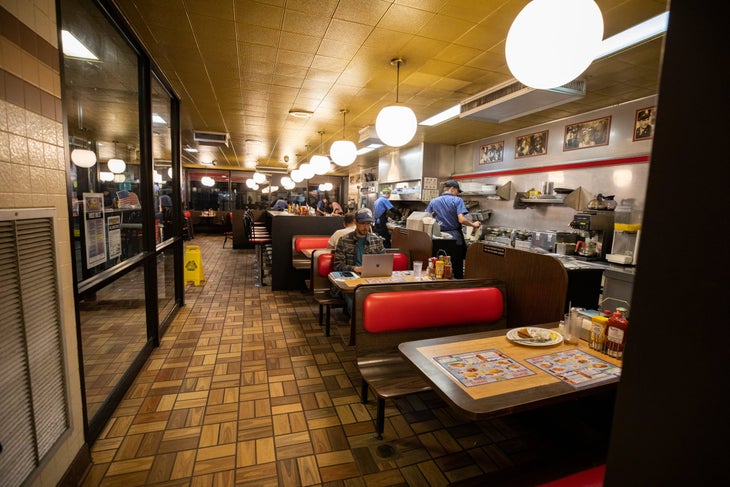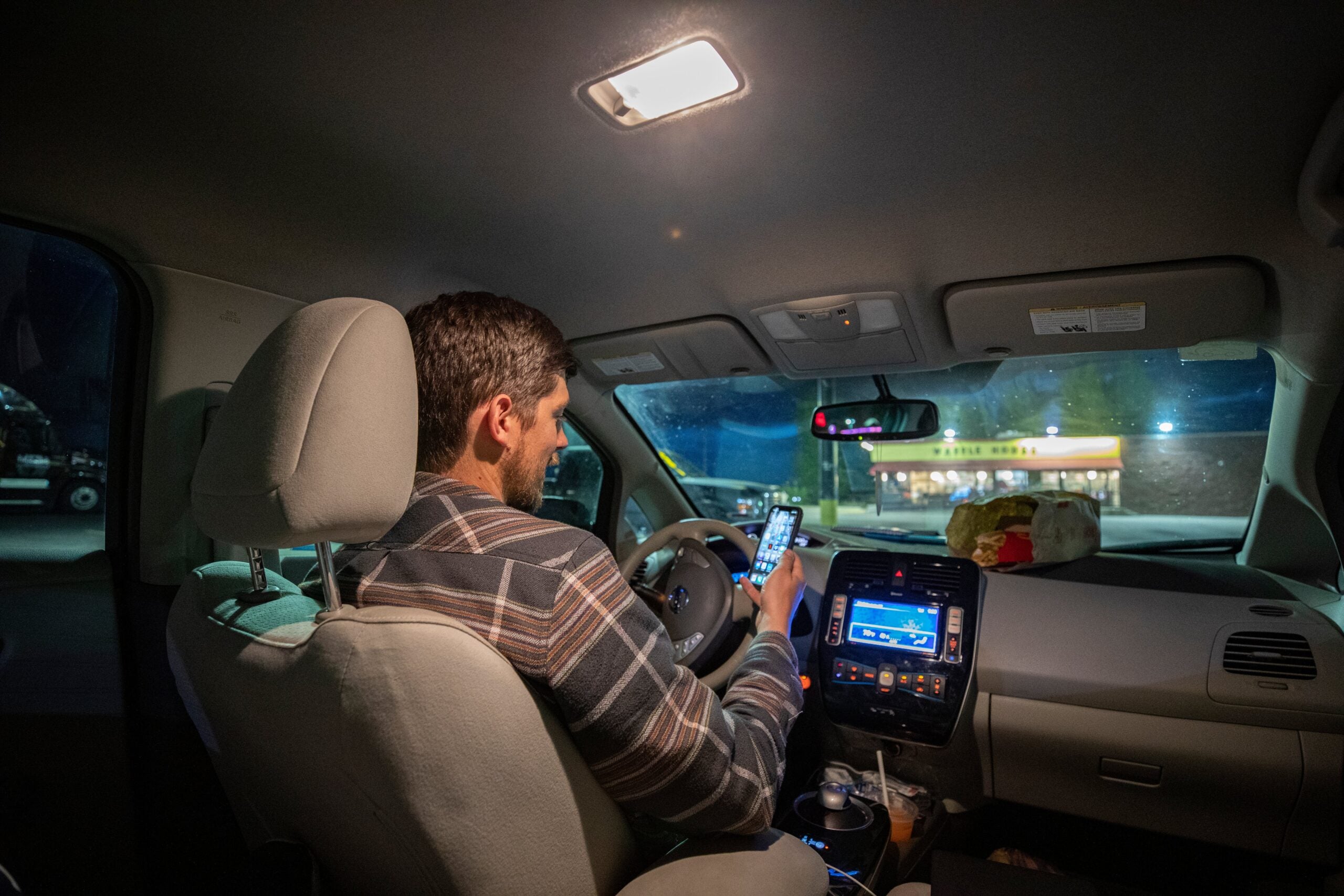In the beginning, the dream was simple: just you, the gear, and the open road. You’re somewhere, it doesn’t matter where. Between Colorado and Wyoming, say. You’ve got a truck full of next season’s climbing gear. Your next appointment isn’t until tomorrow, and there’s a crag and a pancake diner between it and you.

During the early days of the industry, the life of a sales rep was glamorous, and not only for the adventurous lifestyle it offered. Reps served as catalysts and pollinators, stoking the fires of fledgling markets by scurrying between brand headquarters and gear shops, educating retailers on emerging technologies, and spreading the word about sales trends and new ideas. The industry is what it is in part because these folks built a network of relationships that unified it.
That was in the beginning—20, 25 years ago. Now, American retail is changing, and those reps who helped build the industry are at risk of losing their jobs and legacies.
The Dream of the Early Days Is Done.
The original outdoor reps were self-made. If you had the gift of gab and a serious adventure résumé, then you were pretty much in, said All Mountain Group’s Al Diamond, a former climbing guide who now represents brands in the mid-Atlantic region.
Over the past 20 years, the industry has matured. For companies, the growth has been good, leading to more jobs, better salaries, and more money to throw at conservation and advocacy. But it also means consolidation—think Walmart buying Moosejaw, or the string of Vail Resorts acquisitions—and these new, bigger companies aren’t looking for a retired athlete with a Tacoma to represent them.
Brands want the high polish and professionalism of established rep agencies, Diamond explained. And agencies increasingly expect a business background.
“It attracts more traditional reps who don’t participate as much in the activities that they’re selling,” said Kurt Smith, owner of Top Gun Sales, a small agency based in the Southeast. Newer reps tend to be businesspeople, not first ascensionists or ski bums, a shift that threatens the authenticity and core knowledge of the outdoor industry’s front lines. The lonewolf sales rep is going extinct.
Yet, romance and pedigree aren’t the only things at risk from corporatization. The changing face of the rep force could tip the balance of our outdoor ecosystem.
Pulling Work In-House Threatens Reps and Retailers Alike.
There are two types of sales reps: independent and “in-house,” or brand reps. Independents work on a contract basis for commission. They come in the form of solo operators (less often) or agencies comprising several reps working together. In-house reps do the same work of building relationships, educating sales associates, and selling product lines to retailers, but only for a single brand and on a salaried basis.
“As more consolidation happens, I’ve seen more and more of those companies create [in-house] positions for repping,” said Brad Bates, a sales director for Wigwam Mills. This trend threatens the livelihoods of even established agencies, but it could spell trouble for retailers, too. For one thing, independent reps often provide a different level of service than brand reps.
“We love our brand reps, but independent reps are true liaisons,” said Dana Davis, owner of Summit Hut in Tucson, Arizona. “They see what’s going on with hardgoods as well as apparel, what our customers are looking for across brands, and what trends are happening regionally and nationwide. That knowledge and understanding is really valuable.”
The other issue with pulling the rep work in-house is that independent agencies typically maintain a delicate balance of accounts: commissions from big brands subsidize their abilities to service and grow the up-and-comers.
When big brands withdraw from the balance, or radically cut commissions for high-growth accounts like internet resellers, the system teeters. Without big-brand funding, independent agencies can’t thrive. Without independent agencies, smaller brands, which can’t afford in-house reps, stagnate. So if independent reps go extinct, the outdoor industry stands to lose small brands, and with them the scrappy entrepreneurial spirit that pressures bigger brands to innovate.
However, as the industry matures, markets saturate, and brands continue to search for growth, more reps are facing slashed commissions and high turnover as brands seek better deals.
Rather than feeling like part of the brand’s team, said one rep who elected to remain anonymous, “I feel like we’re all disposable.” The revolving door is tough on everyone. Training new reps takes time. And whenever a fresh face comes in, the brand is represented differently, which disturbs continuity, Bates said.
Some independent agencies try to shore themselves up by taking on more accounts than they can handle. As for those who don’t? If one big brand cuts commission, suddenly that agency can’t make payroll.
“I know those people and I watch it happen and I think, oh man, you’ve got kids—what are you going to do?” said Sam Hoyt, a rep at Colorado-based Maple Street Associates. “It’s just hard.”
Technology Takes a Bite Out of Business.
Before email, social media, and brand websites and blogs, information flowed from brand to rep to retailer to customer, and feedback flowed in neat reverse. Nowadays, the connectivity of the modern world muddies that line. Brands and retailers are both communicating directly with the consumer, and competing messages can mean chaos for those caught in the middle.
“I went onto Instagram on the Fourth of July and I saw that one of my brands had posted, ‘Get 30 percent off—go to our website!’” said one rep, who elected to remain anonymous. The sale, which the brand did not announce to its rep or retailers beforehand, siphoned revenue from brick-and-mortar during a holiday that’s typically a critical moneymaker for shops. “Vendors are competing directly with their retailers,” the rep said. “It’s happening more and more.”
Technology gnaws at the edges of the job market in other ways. The robustness of direct-to-consumer sales, both through brand websites and platforms like Amazon, hamstrings specialty retailers, which leaves reps with fewer avenues to make commission. For a while, reps were able to make up those losses by working with independent entrepreneurs who were running Amazon resell shops.
“A bunch of us were having a lot of success with that,” Diamond said. “It was becoming a big portion of our business.”
Now, brands are cleaning house, either cutting off wholesale streams to resellers in an effort to get price variation under control, or selecting only one or two long-term partners. All other resellers effectively get a cease and desist, once again pinching cash streams for reps and making it harder to make a living.

Life on the Road Has Its Romance—and Its Strain.
There are clinics and grand openings. Product demos and store events. Meetings and trade shows. That amounts to anywhere between 75 to 200 days on the road per year, with endless calls and emails in between. One rep (who was on vacation during the interview) said she gets up to 45 emails an hour.
“You miss your family, and you have to watch your kids growing up without you to a degree,” Leta Kalfas said. She’s president of the agency MtnStuff, which serves the Rocky Mountain region.
Adding stress is the fact that reps tend to be extroverts. For people who need a lot of human interaction to be happy, all that time alone on the road can build into a festering loneliness. One rep called alcoholism and drug use among reps “rampant” for this reason.
Yet, most reps say that if you spend long enough in the game, you find ways to achieve balance—whether that’s by getting outdoors, eschewing the hotel room for a friend’s couch, or simply commiserating; rep agencies are known for their camaraderie.
Then there are the other hazards of the road. In 2017, Hoyt was on his way to an appointment when he hit a semi. He broke his “entire face,” several ribs, and three vertebrae. His wife was eight months pregnant.
“It was a crazy time for us,” he said.
“One of my retailers picked me up in the hospital.” Hoyt says he was fortunate—his retailers, brands, and the rest of his industry peers stepped up to support him and his family while he recovered.
This Isn’t the End of Rep Work—but Maybe Rep Work as We Know It.
In a connected world, reps have more responsibility to put on consumer-facing events, Kalfas said. “If a rep doesn’t find a way to connect with the consumers, then that rep is going to go away.”
Some agencies are bringing on marketing and social media managers in an effort to become a one-stop shop for brand building, or establishing showrooms to add value for retailers, who can come to a central location and see several lines at once.
Reps can also endear themselves to brands by serving as a source of market analysis. Bates says he looks for reps who can separate themselves from their region and look ahead to the long-term needs of the brand and where consumers are heading. Thinking of yourself as a brand’s business partner and providing that intel, he said, is an easy way to make yourself invaluable.
Those interviewed—across brand, retail, and sales positions—said there will always be a place for independent reps, albeit perhaps fewer of them. At the end of the day, said one rep, the greatest threat isn’t consolidation. It isn’t Amazon. It’s nostalgia.
“Are we going to be obsolete if we don’t change? We will,” Kalfas said. “You can’t do things the way you used to. But you can do them differently.”


